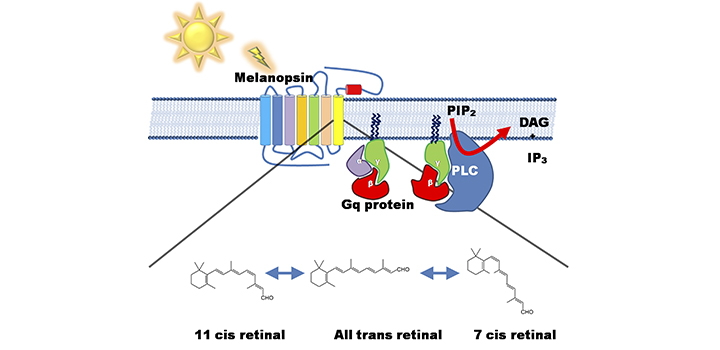Diaz NM et al. 2016, Photochem Photobiol
Melanopsin (Opn4), a member of the G-protein-coupled receptor family, is a vitamin A-based opsin in the vertebrate retina that has been shown to be involved in the synchronization of circadian rhythms, pupillary light reflexes, melatonin suppression and other light-regulated tasks. In nonmammalian vertebrates there are two Opn4 genes, Opn4m and Opn4x, the mammalian and Xenopus orthologs respectively. Opn4x is only expressed in nonmammalian vertebrates including reptiles, fish and birds, while Opn4m is found in a subset of retinal ganglion cells (RGCs), the intrinsically photosensitive (ip) RGCs of the inner retina of both mammals and nonmammalian vertebrates. All opsins described utilize retinaldehyde as chromophore, photoisomerized from 11-cis- to all-trans-retinal upon light exposure. Visual retinal photoreceptor cones and rods, responsible for day and night vision respectively, recycle retinoids through a process called the visual cycle that involves the retinal pigment epithelium or glial Müller cells. Although Opn4 has been characterized as a bistable photopigment, little is known about the mechanism/s involved in its chromophore regeneration. In this review, we will attempt to shed light on the visual cycle taking place in the inner retina and discuss the state of the art in the nonvisual photochemistry of vertebrates.
Authors: Díaz NM, Morera LP, Guido ME
Article: Diaz NM et al, Photochem. Photobiol. 2016 Jan;92(1):29-44. doi: 10.1111/php.12545



